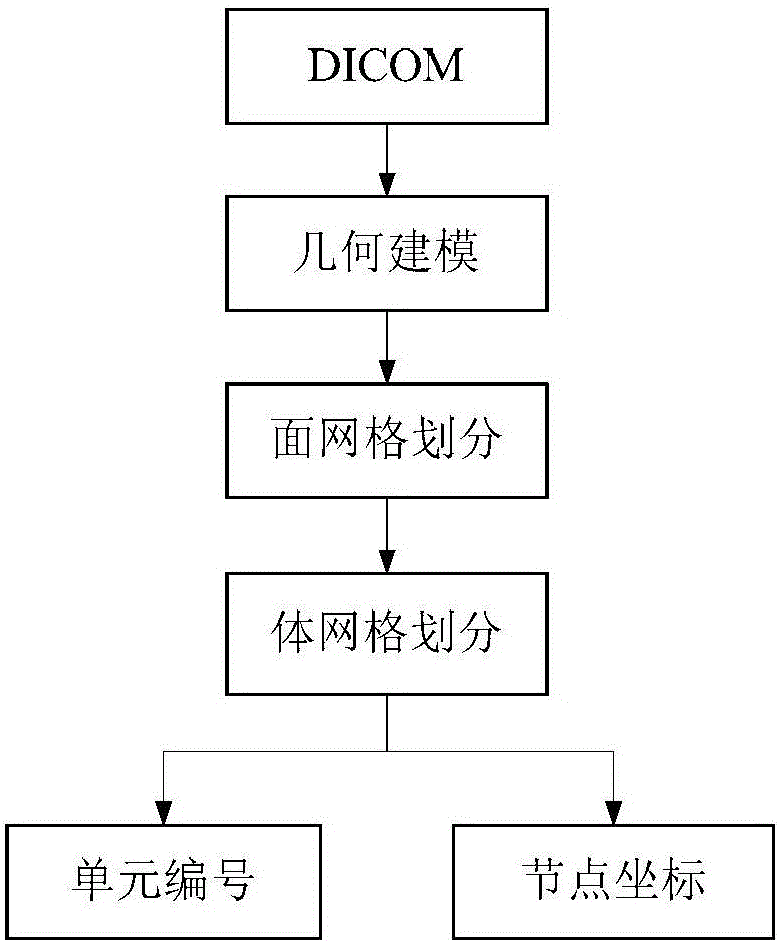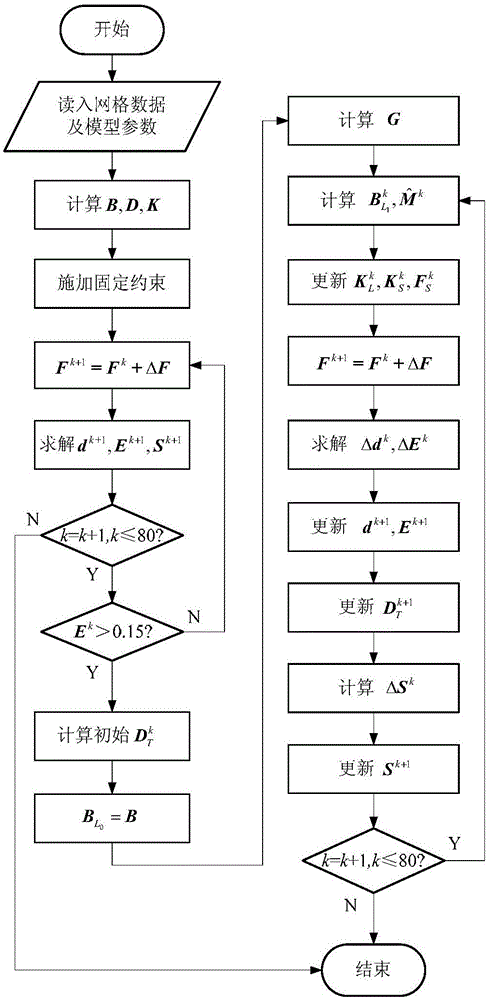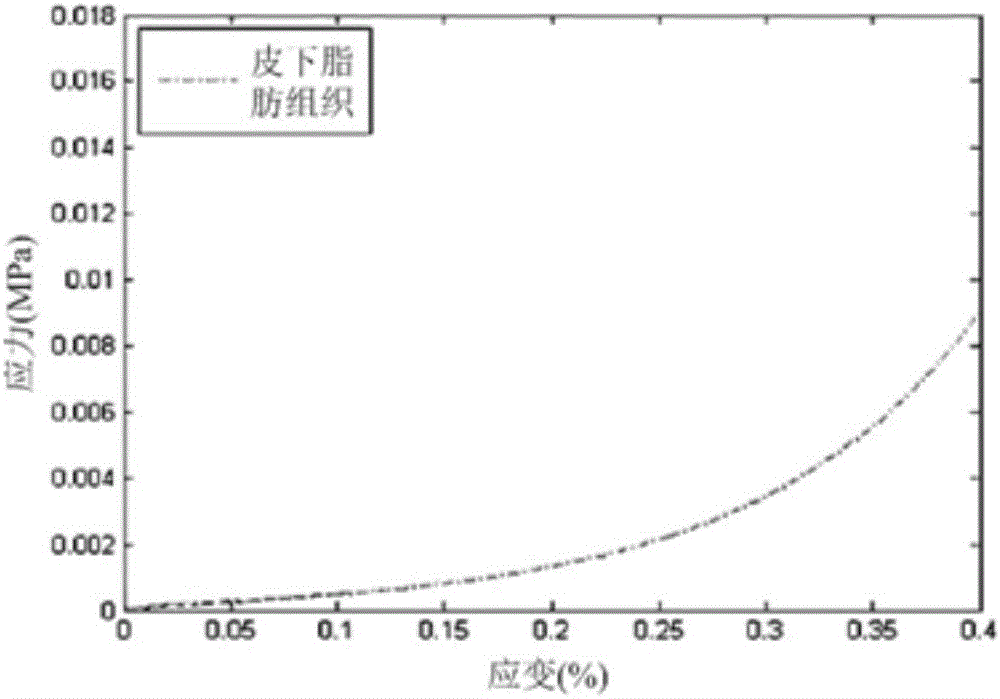Biomechanics modeling method for subcutaneous adipose tissues based on linear elasticity and superelasticity models
A technology for modeling subcutaneous fat and mechanics, which is applied in the fields of bioinformatics, biological systems, and informatics, and can solve the problems of slow speed and low accuracy of subcutaneous fat tissue model simulation
- Summary
- Abstract
- Description
- Claims
- Application Information
AI Technical Summary
Problems solved by technology
Method used
Image
Examples
specific Embodiment approach 1
[0022] Specific embodiment one: the biomechanical modeling method of subcutaneous adipose tissue based on linear elasticity and hyperelasticity model comprises the following steps:
[0023] Step 1: Establishment of geometric model and mesh division;
[0024] Step 2: Establish a linear elastic biomechanical model;
[0025] Step 3: Establish a hyperelastic biomechanical model;
[0026] Step 4: Carry out the finite element simulation of the hyperelastic biomechanical model according to Step 2 and Step 3;
[0027] Step 5: Carry out linear elastic model finite element calculation;
[0028] Step 6: Finite element simulation of linear elastic and hyperelastic hybrid model.
specific Embodiment approach 2
[0029] Specific embodiment two: the difference between this embodiment and specific embodiment one is: the establishment of the geometric model and the grid division in the step one are as follows:
[0030] The patient's individual information is read from the CT image, and the area representing the subcutaneous fat tissue in the CT image is separated from other adhesive tissues through the image segmentation function in the MIMICS software to obtain the density information of the human tissue that needs to be studied; from DICOM data to A grid model is generated and the unit numbers and node coordinates of the model are obtained as raw data input for deformation calculation; the grid model is a geometric model after grid division. The acquisition process is as figure 1 shown. DICOM is a data storage format.
[0031] Other steps and parameters are the same as those in Embodiment 1.
specific Embodiment approach 3
[0032] Specific embodiment three: the difference between this embodiment and specific embodiment one or two is: the establishment of a linear elastic biomechanical model in the step two is specifically:
[0033] The stress-strain relationship of the linear elastic biomechanical model can be expressed as:
[0034] σ=D·ε(1)
[0035] Among them, D is the elastic matrix, which is determined by the elastic modulus E and Poisson's ratio ν; σ is the stress, and ε is the strain.
[0036] Other steps and parameters are the same as those in Embodiment 1 or Embodiment 2.
PUM
| Property | Measurement | Unit |
|---|---|---|
| Elastic modulus | aaaaa | aaaaa |
Abstract
Description
Claims
Application Information
 Login to View More
Login to View More - R&D
- Intellectual Property
- Life Sciences
- Materials
- Tech Scout
- Unparalleled Data Quality
- Higher Quality Content
- 60% Fewer Hallucinations
Browse by: Latest US Patents, China's latest patents, Technical Efficacy Thesaurus, Application Domain, Technology Topic, Popular Technical Reports.
© 2025 PatSnap. All rights reserved.Legal|Privacy policy|Modern Slavery Act Transparency Statement|Sitemap|About US| Contact US: help@patsnap.com



